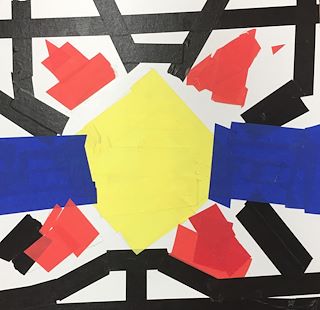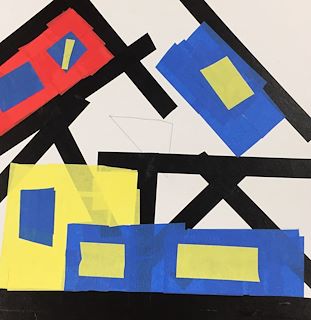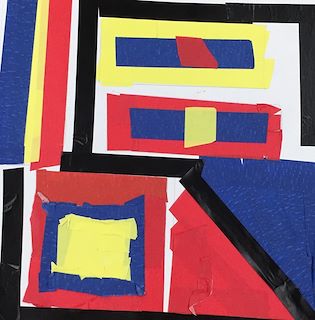For our staff meeting that took place in the beginning of November, we had a fun team building activity where the WRS staff were given some cut paper and a round circle format. They were challenged to create an emoji that represented something about them. Teachers carefully chose the color of their circle format, with some choosing the iconic yellow associated with emoji’s and others thinking outside the box using orange to represent a Tabby cat or blue to show their support of autism. Some teachers decided to express something about them outside of their profession, such as their love of cooking or the beach. Other staff members represented what they teach. This art making activity showed what a creative staff we have at Woods Road School!
Sunday, November 12, 2017
Team Building Through Emoji's!
For our staff meeting that took place in the beginning of November, we had a fun team building activity where the WRS staff were given some cut paper and a round circle format. They were challenged to create an emoji that represented something about them. Teachers carefully chose the color of their circle format, with some choosing the iconic yellow associated with emoji’s and others thinking outside the box using orange to represent a Tabby cat or blue to show their support of autism. Some teachers decided to express something about them outside of their profession, such as their love of cooking or the beach. Other staff members represented what they teach. This art making activity showed what a creative staff we have at Woods Road School!
Friday, October 27, 2017
Tape it up Mondrian Style
Another great project that was lead by my student teacher this school year, was inspired by her love of tape and the artwork created by Dutch artist Piet Mondrian. First grade students began this unit by examining the Mondrian's artwork and identifying the elements of art SHAPE, LINE, and COLOR and how they come together to create a non objective artwork. Next, we discussed how Mondrian wanted his art to connect with others and we brainstormed how and why people work together/connect with each other in clubs such as in girl scouts, sports teams, and when playing games.
For the first day, each table worked together to put together an extra large puzzle of one of Mondrian's artworks. At the end of class, students reflected on some of the challenges when it comes to working collaboratively. Students discussed how they had to be patient and wait their turn or help their peers put the pieces in the right places.
Students putting together Mondrian puzzle.
The next class we focused on Mondrian's use of GEOMETRIC SHAPES and we drew our own and then used tape to add color on top of them. The theme of connecting through art was played out in a variety of ways. Our black lines that we added to our artwork had to connect to our shapes or edge of the paper. Additionally, by working together in class activities and planning out the collaborative mural the students understood how they could all individually come together to create a whole
artwork.

Composition A, 1923 Piet Mondrian



Pre-K Loves Donuts!
Joel Penkman
Our student teacher lead my pre-k artists in an Joel Penkman inspired printing project. Students used a brayer to roll paint on a donut shapes sponge, which they picked up the sponge and pressed it onto the page. This created the base of the doughnut. Next class, students used pink, white and brown paint to put icing onto the doughnuts using the same technique of rolling a brayer in paint and rolling the paint onto the sponge. Lastly, we added sprinkles and other toppings by using Q- Tips and a fork. They dipped their object in the paint and dotted it onto the doughnut in different colors to resemble Joel Penkman doughnut box paintings. We ended the class having fun reading the book Please Mr. Panda.
Student Artwork

Tuesday, September 19, 2017
Sticking Together
To start off the year we discussed how artists sometimes work collaboratively or by themself to create a mural. We defined a mural as a large piece of artwork for many people to see typically on a wall inside or outside. Preschool through transitional primary used crayons and markers to create different lines and shapes on their popsicle sticks. Second and third grade incorporated warm or cool colors using colors sticks and sharpies. Fourth graders had the large tongue depressors and limited their color palette to either warm and cool, primary, secondary, complementary or monochromatic colors. Many students chose to incorporate patterns into their sticks as well. Once all of the sticks were created, our fourth graders worked together to organize them into these four panels.
Tuesday, August 15, 2017
Surf and Turf
Fish Hawk or Osprey, Birds of America, John James Audubon
First grade started out their unit on clay by exploring how many ways they can change clay with their body as well as with a variety of tools. We examined artist and ornithologist John James Audubon and his fascination with birds. Next, I was inspired by Cassie Stephen's clay birds and I loosely based this lesson of of hers that you can find HERE. Students learned how to create score and slip to attach two pieces of clay and make an impression by pressing down different textured tools into the clay. Each student had the option to make a bird or fish and after their clay was bisque fired they used construction paper crayons to color and added india ink on top as a resist batik look.
Fourth Grade Masks
Then we covered plastic roylco masks with paper mache to build up a quick armature. Next, we added parts to make our masks more unique and specific with newspaper and tape as well as plaster kraft to solidify the masks. The last step was deciding if we wanted to paint our masks realistically or stylistically and what embellishments we would add if any. Everything we have learned the last several years in art class came into play from creating a three dimensional form to color theory. Click here to see masks from past years.
In Progress
Student Artwork
Subscribe to:
Comments (Atom)

























